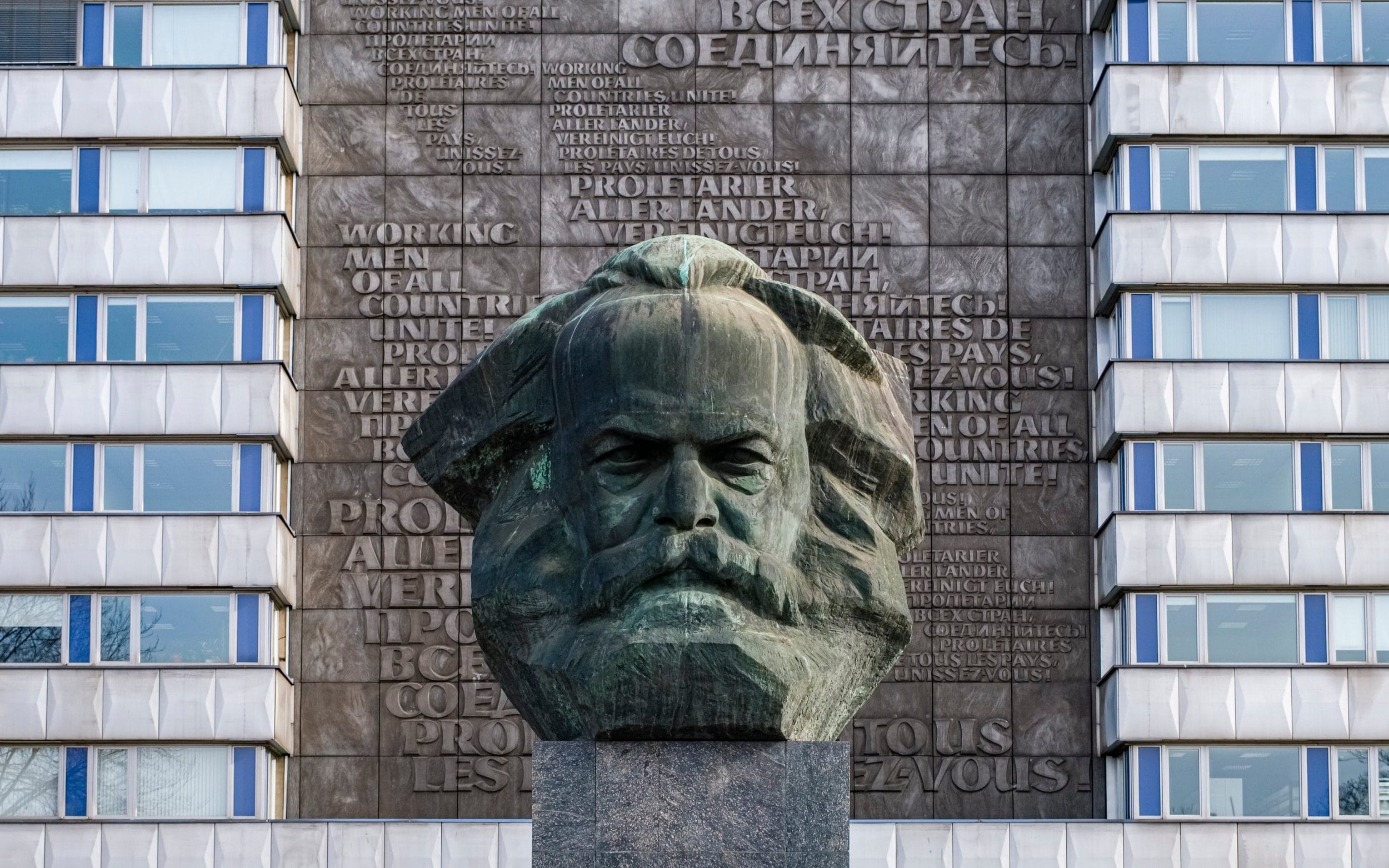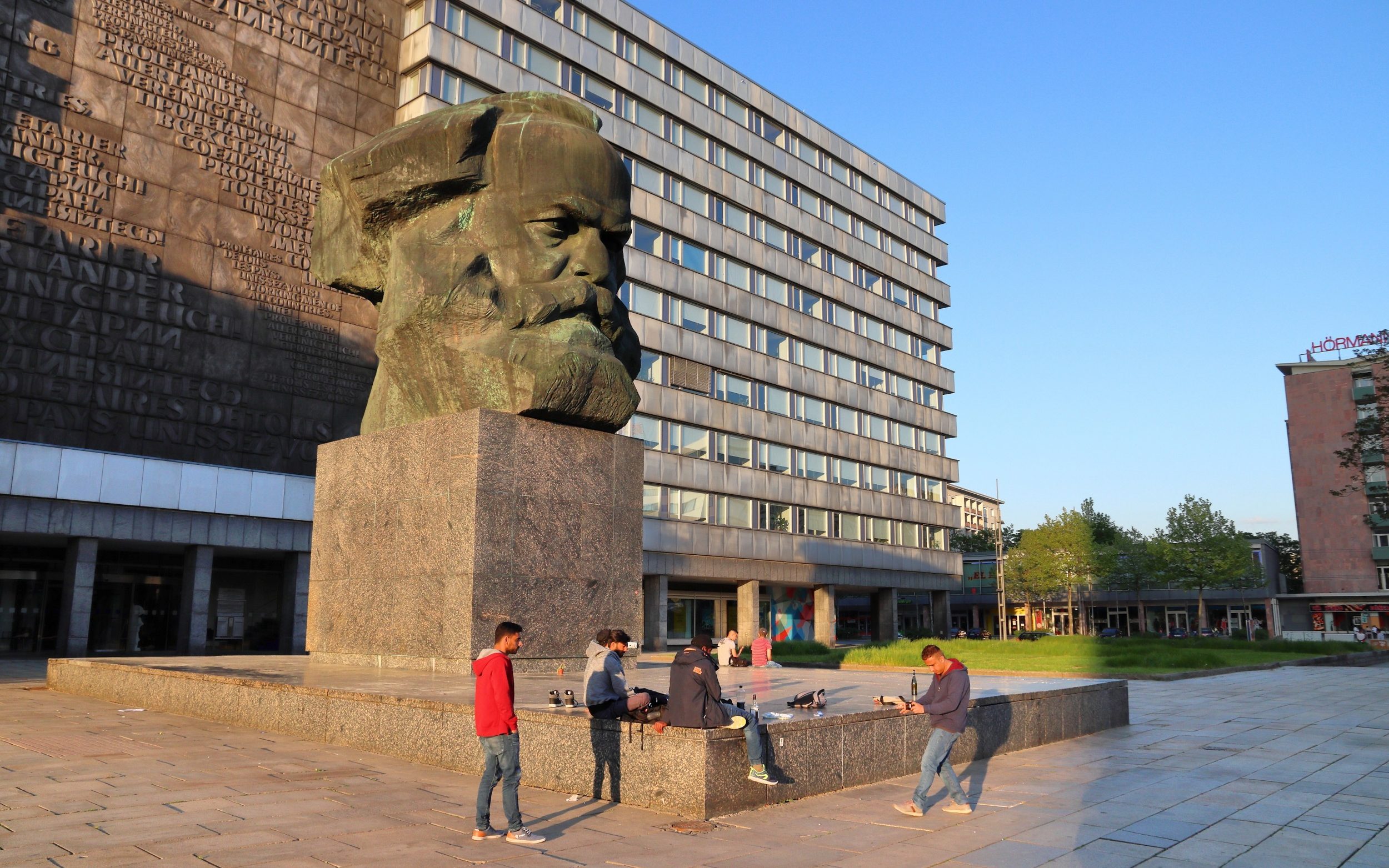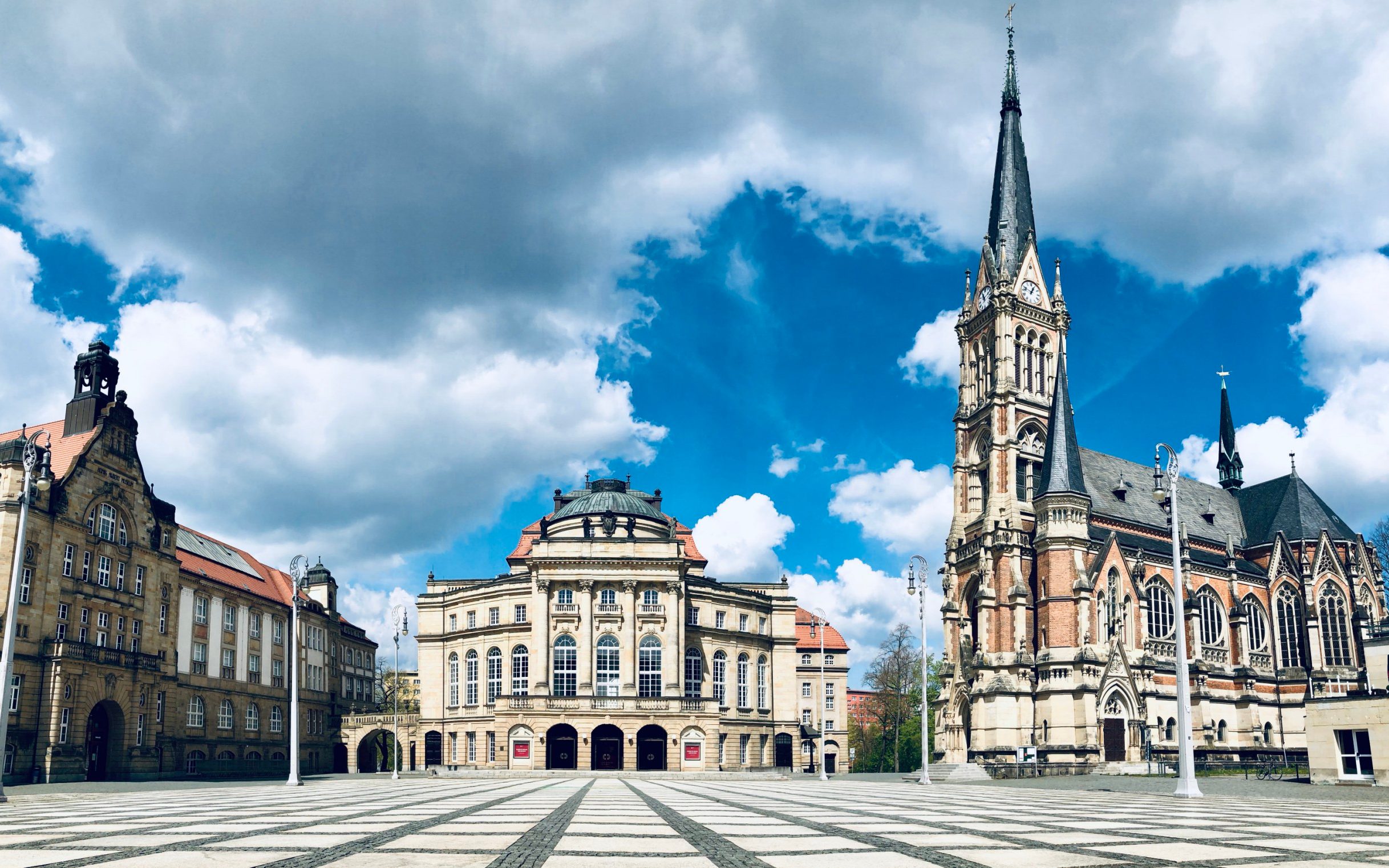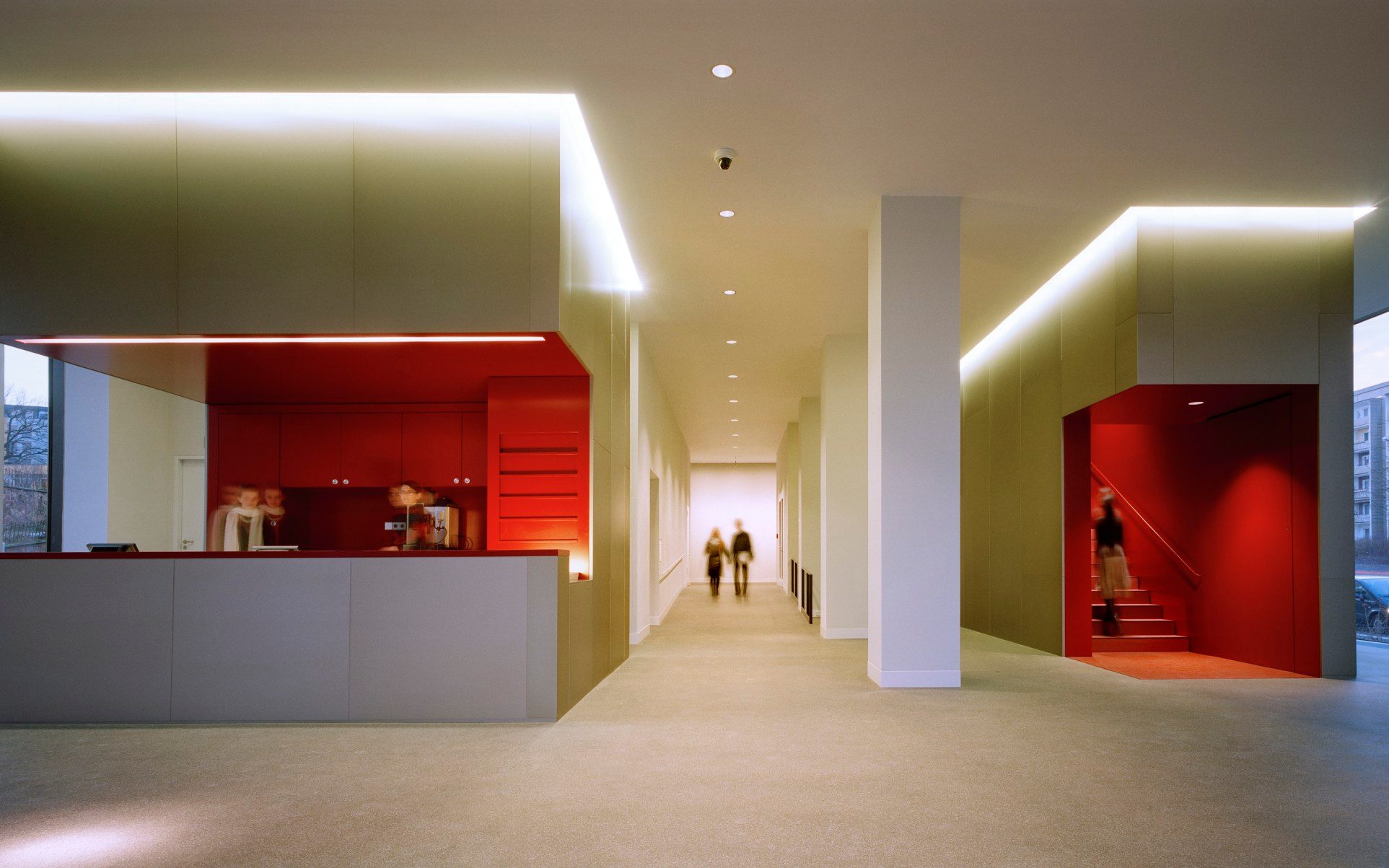Inside the former communist utopia about to become an EU Capital of Culture

‘At the centre of this concrete maze, glowering like a grumpy prophet, is a gigantic bust of the man who gave his name to this communist dystopia, Karl Marx,’ writes Cook – Getty Images
Sitting in the penthouse bar of the Congress Hotel in Chemnitz, looking down at the bleak modern cityscape below, you get a good idea of what Western Europe might have looked like if Russia had won the Cold War.
Beneath this ugly socialist skyscraper are rows and rows of brutalist apartment blocks – soulless, anonymous, monotonous – and at the centre of this concrete maze, glowering like a grumpy prophet, is a gigantic bust of the man who gave his name to this communist dystopia, Karl Marx. “Workers of the world, unite!” reads the proclamation on the wall behind him.
Whatever happened to Karl-Marx-Stadt? As a schoolboy in the 80s, gazing at maps of Eastern Europe and wondering if I’d ever get a chance to travel there, East Germany’s Karl Marx City seemed especially strange. What had it done to deserve that spooky title? Did you have to be a Marxist to live there? If you went there and you weren’t a Marxist, would they ever let you out again? Even as a child, I could sense that there was something sinister about imposing the name of a single person upon an entire city. And then the Berlin Wall came tumbling down, and Karl-Marx-Stadt disappeared.
The actual city didn’t disappear, of course. It merely reverted to its old name, Chemnitz. However for anyone outside Germany, it might just as well have vanished. After Germany was reunited, in 1990, western tourists flooded into Eastern Germany, but they steered a wide berth of Chemnitz and no wonder. By all accounts, there wasn’t much there left to see.
Next year, however, the city formerly known as Karl-Marx-Stadt will be crowned European Capital of Culture. I must admit, when I first heard the news, it sounded like a particularly unfunny German joke. Has this forgotten city had an unlikely renaissance? I’ve come here to find out.
I first came to Chemnitz in 2010, 20 years after German reunification. I’d travelled all over Eastern Germany and been impressed by the rapid pace of change, but here in Chemnitz it felt as if the Berlin Wall had only been down for a few months. “All power to the Five-Year Plan!” read a faded slogan on a derelict factory wall. It wasn’t just the massive bust of Marx, or the proletarian housing schemes that surrounded it. Above all, it was the air of listless inertia. The city centre seemed deserted. Where had everybody gone?

Karl Marx monument in Chemnitz – Getty Images
In 1900, Chemnitz was one of Germany’s richest cities, an industrial boomtown, the engine room of the Second Reich. It wasn’t just famous for its factories. It was renowned for art and music too. Remarkably, it came through the Second World War relatively unscathed, until March 5 1945, when its handsome, historic Altstadt (Old Town) was flattened by the RAF.

The historical opera house – Getty Images
When Germany surrendered, most of Chemnitz lay in ruins, but other German cities were even more badly damaged and have since been remarkably restored. The reason so little of Chemnitz survived was because its new communist rulers decided to create a brand new city amid the rubble, a futuristic citadel of faceless tower blocks. In 1953, this new city was renamed Karl-Marx-Stadt. Chemnitz was no more.
Ironically, Marx never even set foot in Chemnitz (he was born and raised in Trier, in western Germany, 350 miles away). The reason it was so renamed was because the communists wanted to turn it into a proletarian utopia, a workers’ paradise built in a stark new Soviet style.
After reunification, the inhabitants of Karl-Marx-Stadt voted three-to-one to restore the city’s old name. For all those who’d been repressed by the old regime, this was an important symbolic change – under the communists, even referring to your hometown as Chemnitz was a black mark against your name – but the practical benefits took a lot longer to filter through.
More than any other East German city, Chemnitz epitomised the painful transition from communism to capitalism. If you were young, it was a fantastic opportunity. If you were middle-aged, you often ended up redundant, left behind. Old rust-belt industries collapsed, and the new hi-tech ones that replaced them required far fewer workers. The population shrank as youngsters went west in search of work. Germany’s new far-Right party, Alternative für Deutschland, attracted significant support.
Returning here after 14 years, it’s clear that Chemnitz is much improved. Smart new buildings are springing up, shabby old ones have been improved. There are more people in the shops, and on the streets. Unlike my last visit, in 2010, it feels like somewhere you could make a future.
But it’s still a million miles away from what most Britons would regard as a conventional holiday destination – and it probably always will be. Even for a weekend city break, it’s quite a stretch. If you’re keen on modern art or modernist architecture, there are various sites of interest scattered around the city, but fewer than you’ll find in Leipzig, an hour away.
If you’re curious about what went on behind the Iron Curtain, a walk around the city centre is an intriguing cautionary tale – this is what happens when urban planners sweep away centuries of history and impose a new ideology upon a defeated, powerless populace. For students of history or sociology it’s fascinating, but even if you’re especially interested in East Germany, there are several other cities you should see before you come here (such as Dresden, Leipzig, Weimar and Potsdam).
So why is this unprepossessing city set to be European Cultural Capital? Because this EU scheme is about boosting struggling regions and conurbations, rather than highlighting cultural hotspots which are already on the map.
Sometimes, this initiative can transform an ailing city’s reputation. It worked for Glasgow and Liverpool, but these are two great metropoles, in spite of all their problems. Chemnitz is more like Coventry or Croydon.
After all that it’s been through, I hope its year as Capital of Culture gives Chemnitz a boost, but prospective visitors need to know that this place is still a work in progress rather than a finished product. If you want to know what became of Karl-Marx-Stadt it’s well worth a brief visit, but I’d recommend you stay in Dresden or Leipzig and do it as a day trip.
On the green edge of town where few bombs fell, some of old Chemnitz survives: grand old villas with leafy gardens, relics of a vanquished age. It’s poignant and rather eerie wandering along these graceful avenues, thinking what a pleasant, prosperous place this used to be, before the catastrophes of Nazism and communism, the Holocaust, the two world wars…
Will Chemnitz ever be beautiful again? I doubt it. Too much has been lost, and much of what has replaced it is bland and anodyne. Yet among the people I met here I found a sense of local pride and discreet optimism that’s often missing in more touristic destinations. Last time I came here, the spectre of Marx loomed large over Chemnitz. Now he seems like a harmless curio, the quaint souvenir of a brutal philosophy which condemned a generation to serfdom.
Chemnitz has weathered the worst of times, a century of calamities, and come out smiling, and that, in its own small way, is inspiring.
Chemnitz essentials
Unless you’re a big fan of Cold War history, the best way to visit Chemnitz is on a day trip from Dresden or Leipzig, only an hour away via Deutsche Bahn. If you want to stay the night, the Chemnitzer Hof is the smartest hotel, a comfy and atmospheric four-star which accommodated Eastern Bloc VIPs during the communist era. Doubles from around £100 a night, without breakfast.
Eating out in Chemnitz is generally good value and good quality, but I didn’t find anywhere I’d be particularly keen to recommend. There are plenty of decent chains. My favourite is Nordsee, a cheap and cheerful fish restaurant serving tasty takeaway and sit-down meals.
Remarkably, for a relatively small city, Chemnitz boasts a wide range of excellent museums. Kunstsammlungen Chemnitz comprises five art galleries, in various scenic locations around town. Kunstsammlungen am Theaterplatz is the main one, with a superb array of German Expressionists. The Gunzenhauser Museum has a smaller collection, but the pictures are just as good. Villa Esche is a stylish modernist mansion built and furnished by the great Belgian architect and designer, Henry van de Velde. The Schlossbergmuseum houses a modest local history collection, but the best exhibit is the building – a medieval monastery on a wooded hill, overlooking a tranquil lake. The Saxon Industrial Museum, in an old factory, surveys the heyday of Chemnitz as an industrial metropolis. The most spectacular display is SMAC, Saxony’s state archaeology museum, located in a striking Art Deco department store, Schocken, which was founded by a German-Jewish family and subsequently seized by the Nazis.

The Gunzenhauser Museum
I flew to Berlin with British Airways (which flies there from Heathrow and London City) and travelled on to Chemnitz by train: two hours from Berlin Brandenburg Airport to Leipzig, then another hour to Chemnitz. Ryanair flies to Leipzig from Stansted, and to Berlin from Birmingham, East Midlands, Manchester and Stansted. EasyJet flies to Berlin from Luton, Bristol and Edinburgh.
For more information visit chemnitz.travel or germany.travel.
Play The Telegraph’s brilliant range of Puzzles – and feel brighter every day. Train your brain and boost your mood with PlusWord, the Mini Crossword, the fearsome Killer Sudoku and even the classic Cryptic Crossword.
